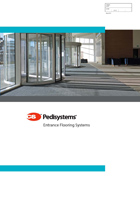Project Summary
Habitat 76 is the main lessor of capped rental housing in Seine Maritime. Since 1919, this social enterprise manages, among other things, the construction of collective housing, the acquisition of new programs and allocates them in more than 191 municipalities of the department to households with limited resources.
Full Case Study
Responsible for multiple missions and maintenance duties, this social actor ensures the maintenance of buildings in order to offer user-friendly living spaces that meet the expectations of local social housing policies for the 30,000 homes he manages. Faced with an energy loss and wear of some of its rental housing, Habitat 76 has recently appealed to Bouygues Bâtiment Grand Ouest by entrusting the rehabilitation of more than 876 housing units on 48 buildings. The operation aims to improve the quality of buildings and technical installations. This project is governed by an energy performance contract, in line with the eco-responsible values and approaches of the lessor.
Design Goals
With almost a century of experience in the rental management and maintenance of real estate for collective use, Habitat 76 is aware of the financial impact of wear and tear on a building or the obsolescence of its constituent materials. The increase in current expenses and the need to undertake more substantial and costly future renovations follow. In this sense, and aware of the economic benefit of an improvement project, Habitat 76 has launched a vast public property rehabilitation plan in the context of an energy performance contract (EPC).
This project totaling 1,435 housing units has been divided into two lots that distinguish the agglomeration of Le Havre from that of Rouen. As an agent, Bouygues Bâtiment Grand Ouest won this project in a design-build-operate-maintenance consortium. The team in charge of the project for the Rouen agglomeration is made up of the architectural firm Fabri architects, the engineering firms Reber and Elan guaranteeing the thermal and fluid aspect of the project and Idex, specialist operator of the energy efficiency.
The entrances and especially the floors of residential buildings are oversupply spaces that should be protected. Every day, the floors of the Habitat 76 residences are crowned by more than 90,000 tenants. Just on the postulate of a daily return trip, more than 180 000 passages are suffered by the common parts.
To this heavy traffic is added wear factors such as the intrusion of water, chippings and more or less coarse dirt which are real plagues for the floors of all buildings. In record time, they cause scratches, traces and erosion of tiles, and weaken more fragile floors (parquet floors, carpets and vinyl floors).
In its economic interest but also for the comfort and quality of life of the tenants and a consistent aesthetic for all of its buildings, it was essential for Habitat 76 to specify in the specifications a uniform reception solution that anticipates premature deterioration of building floors and which perpetuates improvement and renovation operations.
Results
After a phase of works spread over more than 15 months, preceded by 7 months of design, the rehabilitation of the 48 social housing buildings was completed at the end of 2017. The whole of the operations aimed at improving the energy efficiency of the buildings is more than promising, the estimated energy saving is 37%.
To contribute to the improvement of the insulation and the thermal comfort inside the buildings and to ensure a durable protection of the grounds more than 86 carpets Pedimat®, more than 120m ² of protection of grounds, were installed at the entrances of the buildings residential. Placed out of the ground and adjusted in their receiving pit, Pedimat® carpets contribute to the insulation of the hall. The dense fabric that composes them limits the loss of heat at this thermal bridge.
Satisfied with the performance and promise of the successful Pedisystems® entrance mats in some of their buildings, Habitat 76 has renewed its trust in Construction Specialties.
Also selected for its recognized technical characteristics, the Pedimat® also provides a winning triptych for maintenance operations. Designed in solid aluminum, the carpet frame ensures the first phase of cleaning. Aluminum profiles take off coarse and dry soils, while textile inserts absorb and finish scraping wet residues and water to dry the soles of shoes. The Pedimat® adds to its technical characteristics a roll-up function that makes this carpet ideal for regular maintenance and cleaning operations in a collective environment.

